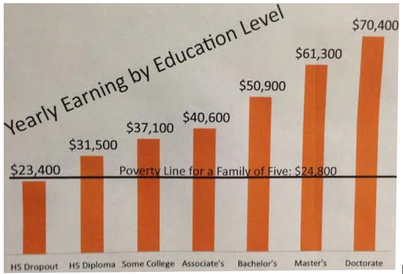
I just returned from the California League of Schools Technology Conference in Monterey and attended a session by John Merris-Coots ([email protected]) of the California Career Resources Network (CalCRN). Mr. Merris-Coots outlined the resources
Students can not only research overall career options, but can also sort them by counties, median wage, job openings, future job growth, and by post-secondary training requirements.
Students also can create a budget showing how much their lifestyle will cost them and compare this to their career choice. The website also shows how much their required education, whether college or vocational or apprenticeship, will cost them.
Here are some statistics to consider on this subject:
- By 2018, 70% of all middle-class jobs will require post-secondary education.
- Jobs requiring a post-secondary degree will have a 24% growth.
- There will be no growth in jobs requiring only a high school diploma.
- Median income for a high school dropout is $23,400 which is below the poverty level for a family.
- How important is career education in our schools, and when should it begin?
- Do you have such a program at your school?
- Is the high cost of college compared to the scarcity of high paying jobs worth the student debt?
- What role does vocational education play in this?
- How can students from poverty pay for post-secondary education?
 RSS Feed
RSS Feed